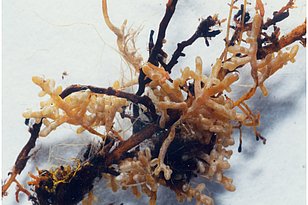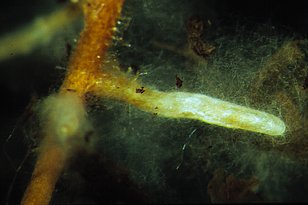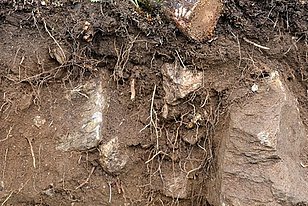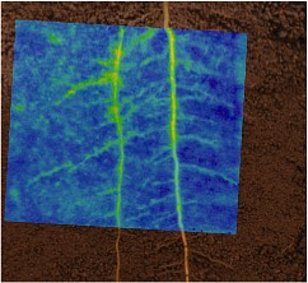Roots and rhizosphere link the soil with the above-ground part of an ecosystem and the atmosphere. Root traits and rhizosphere processes therefore play a crucial role in the biogeochemical cycling of carbon, nutrients and water, and in the response of plants to soil conditions that were altered due to climatic changes.
Contents ¶
Roots ¶
Roots, the hidden half of plants, fulfill various functions. Fine roots take up water and nutrients such as nitrogen, phosphorus, and potassium. Coarse roots stabilize the soil and the above-ground part of trees. Both types of roots store carbon compounds and – when they die - become important sources of soil organic matter. Most fine roots of trees are colonized by mycorrhizal fungi. The dense hyphal network increases the volume of soil available for water and nutrient uptake.
Rhizosphere ¶
The rhizosphere is the part of the soil next to roots which is strongly influenced by their activities. The uptake of water and nutrients by the roots leads to respective depletion in the rhizosphere. The release of organic substances (“root exudation”) into the rhizosphere can increase the availability of nutrients and mitigate toxic conditions. Furthermore, root exudation can stimulate and shape the microbial community in the rhizosphere.
Basic references on the rhizosphere: Luster and Finley 2006; Luster et al. 2009; Luster 2010 (for references see table below)
We investigate the role of root traits, root turnover and rhizosphere processes within various research topics, including (for references see table below):
- Carbon sequestration in soils: Brunner et al. 2013; Solly et al. 2015, 2018; Gavazov et al. 2018, 2022
- Response of trees to water and nutrient scarcity: Herzog et al. 2014; Brunner et al. 2015, 2019; Hagedorn et al. 2016; Meller 2019; Joseph et al. 2020; Meller et al. 2020; Vogt 2021
- Migration of plants due to climatic changes: Solly et al. 2017; Hagedorn et al. 2019; Adamczyk et al. 2021.
- Greenhouse gas emissions from soils of near-natural ecosystems: Ley et al. 2018; Ley 2022.




